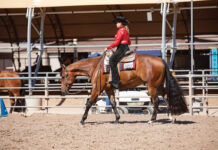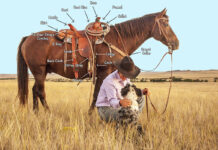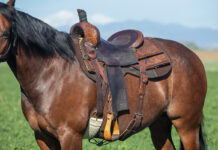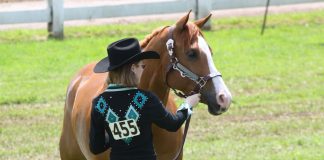Slow and steady wins the race, right? However, a lackadaisical horse isn’t always a good thing. When you feel like your legs will fall off from constantly nudging your lazy horse along or you’re frustrated with his lack of response, you need to change your tactic to get him going. Here, AQHA and APHA Professional Horseman Heather Young has some tips to kickstart your pokey pony.
Why such a Lazy Horse?
“Some horses have a bad work ethic, and some are just naturally laid-back with their temperament,” says Young.

For some riders, a lazier horse can be good—particularly a newbie.
“A lot of people will say that it’s easier to wake [a horse] up than it is to slow one down,” says Young. “But it depends on the rider—their level of expertise, their abilities. A lazy horse can be good for a rider, especially for a novice, because when their nerves start taking effect, the horse won’t be as reactive. A lazy horse tends to suit a beginner much better than one that’s high-strung.”
A low-key horse is also a plus when you’re in a situation where there’s a lot of tension, such as during a competition, where you’re under a lot of pressure.
“A lazy horse might not be as affected by that tension compared to a more feely, high-strung horse,” says Young.
The problem with a lazy horse can crop up when you need to ask a lot of him, performance-wise, and he may not deliver, according to Young. Having some tools to light a fire under your horse can help.
Wake-up Cues for a Lazy Horse
In a nutshell, you need to ask your horse to move his feet, says Young. This starts with a voice command.
“Clucking basically gives your horse an alert telling him you’re about to ask him to move his feet and do something,” says Young. “Once you cluck, add more energy with your legs as well.”
Start with light calf pressure, then increase to firmer calf pressure, and if needed, your heels. Your horse should respond with increased energy in his leg movement.
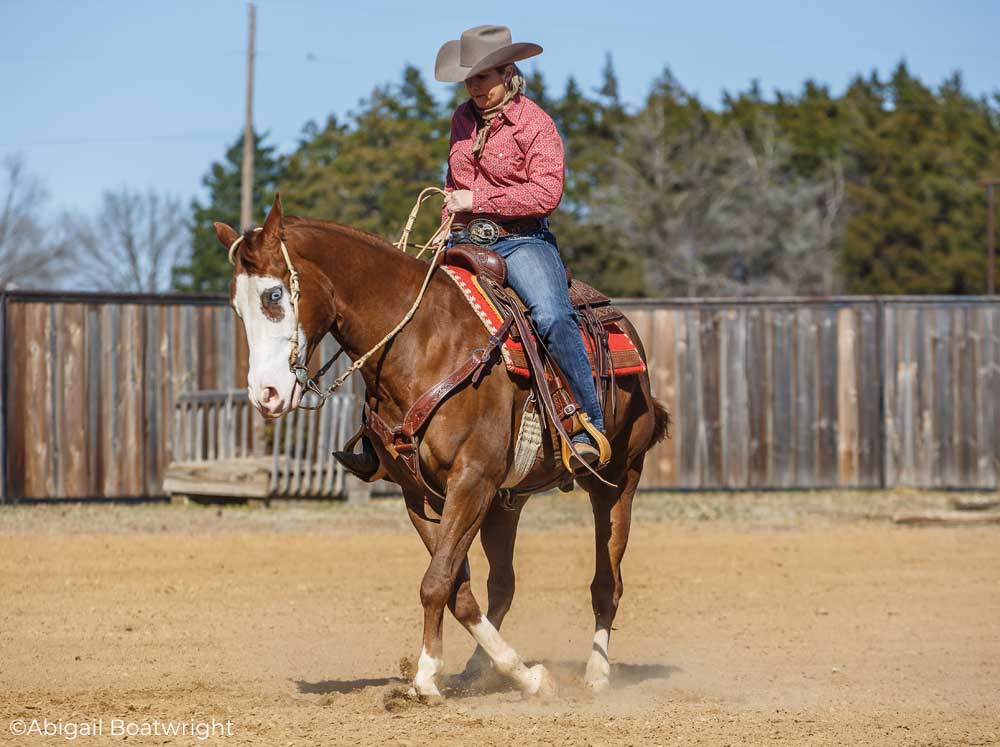
“If your horse is still dragging around and lazy, then you want to make him work harder,” says Young. “Pretty soon, he’ll realize that he’s going to have to do the job, and he’ll get comfortable with that idea.”
If your horse is sticky, exaggerate your cues for the maneuver you were originally asking for, says Young, until you get a response. The next time, start gently. You want to give your horse a chance to respond to lighter cues before you go to firmer ones. If you go to the extreme a few times, your horse will quickly learn it’s better to comply and he’ll be able to do the maneuver at the pace you initially wanted.
The Big Guns
If your horse consistently ignores your lighter-to-heavier calf cues, you may want to incorporate spurs, says Young. But don’t go from clucking straight to your spur.
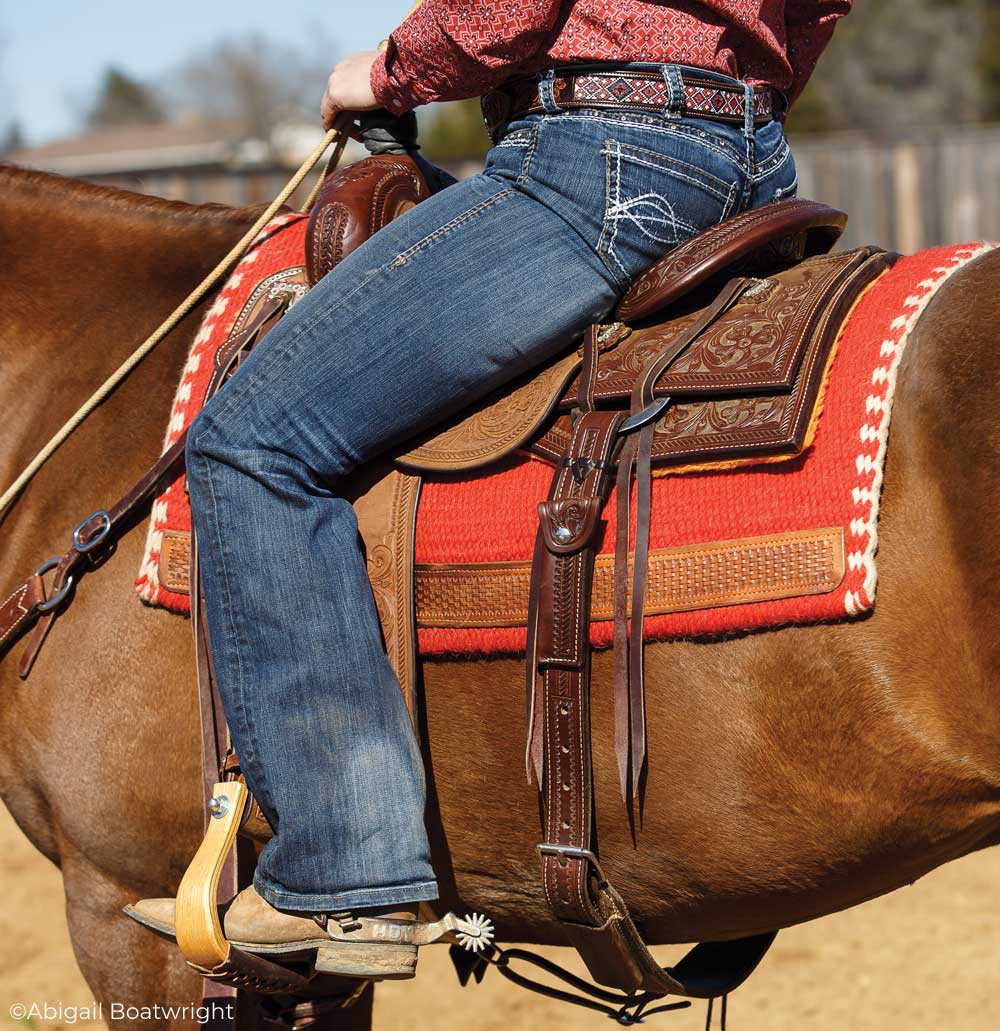
“I like to begin everything in a nice, positive manner,” says Young. “Begin with your calf, and if the horse doesn’t move off your calves, apply light spur pressure. If he doesn’t respond, then you may add some more pressure.”
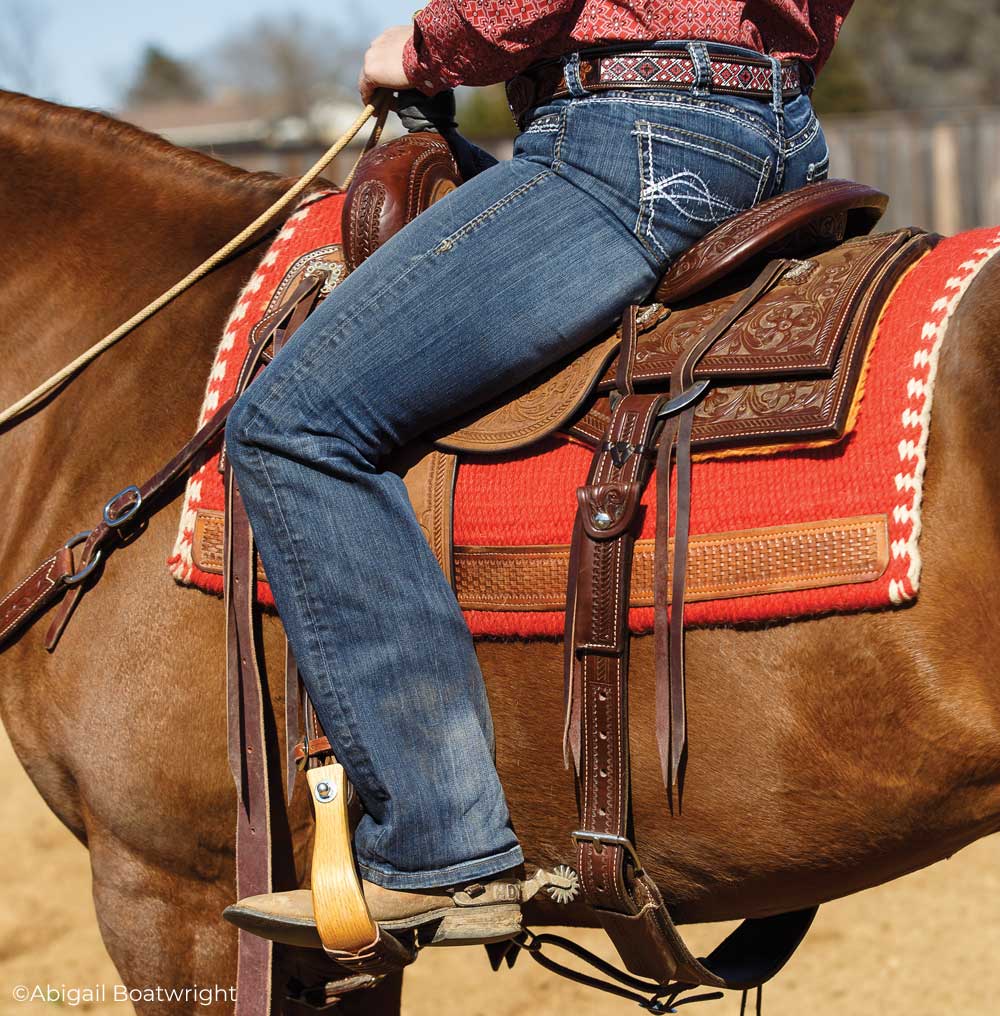
Don’t start out with a lot of spur. Young says this will often generate an undesired response in your horse.
“A sudden spur cue will startle your horse, and he might become defensive about it,” says Young. “You always want to begin with your calf, then your heel, then your spur. Don’t just start off with big jab from your spur.”
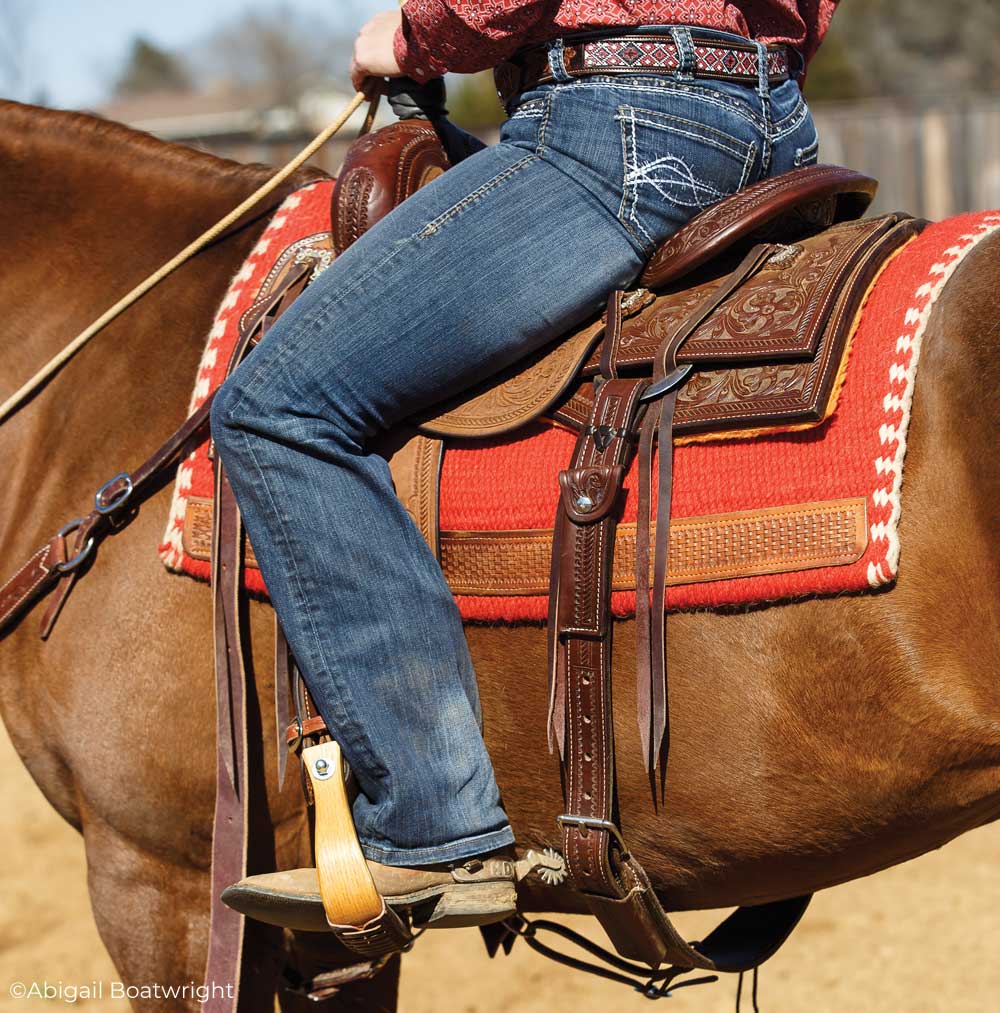
Avoid using the spur in a “picking” manner, says Young. It will only aggravate your horse and make him mad. A gentler method is preferable to get your desired results.
Set the Path
If your horse ignores your requests to move out, Young says to look at what you’re asking of your horse.
“Don’t aimlessly ride around your arena without a purpose,” she says. “Letting the horse go wherever he wants, at whatever pace he wants, will teach him bad habits.”
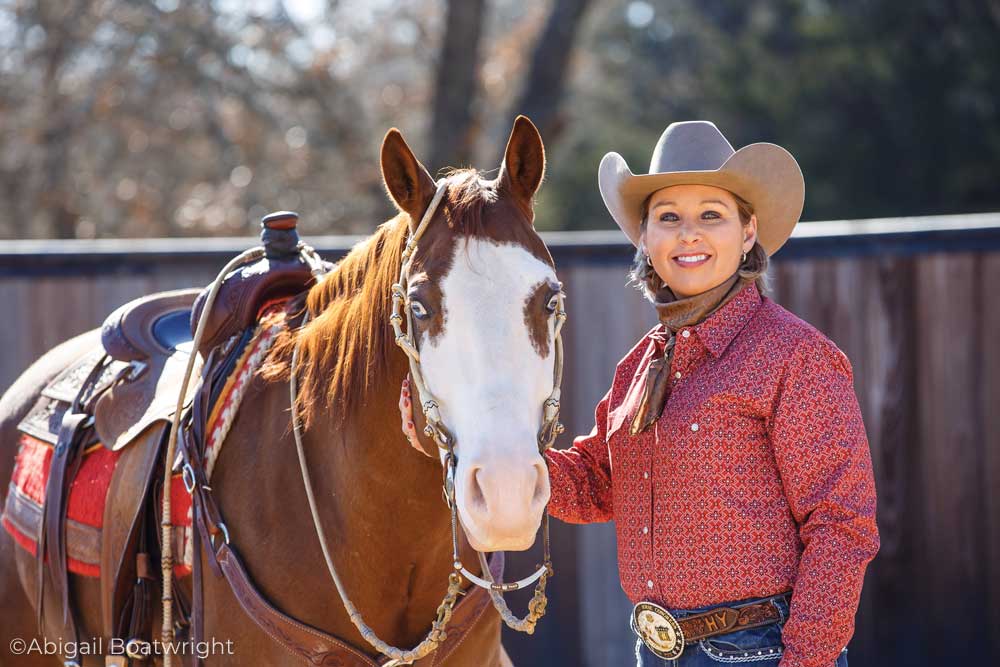
Even if you’re just trail riding, make sure you’re in control of where and how fast your horse is traveling.
“This will help instill a better work ethic,” says Young. “It’s the same thing with people—if you get up one day and slack off on making your bed, by the second or third day, you’ll quit making your bed all together. It’s the same with your horse—if you let him ride around aimlessly without purpose, then he’s going to be lazy.”
Ask for Help
If you’re still feeling frustrated and like you can’t reach the goals with a lazy horse that you’d like to achieve, Young says it might be time to enlist the help of a trainer.
“It could be lessons, or a couple of training rides. Or it could be that you just need a set of eyes watching you that can guide you to achieve your goal.”
Meet the Trainer
Heather Young is an American Quarter Horse Association and American Paint Horse Association Professional Horseman based in Gainesville, Texas. She specializes in versatility ranch horses, reining and cow horses.
She is a carded APHA, National Snaffle Bit Association, National Reining Horse Association and American Stock Horse Association judge. Her clients have earned APHA world and reserve world championships, AQHA reserve championships and money in NRHA competition.
This article originally appeared in the June 2019 issue of Horse Illustrated magazine. Click here to subscribe!

